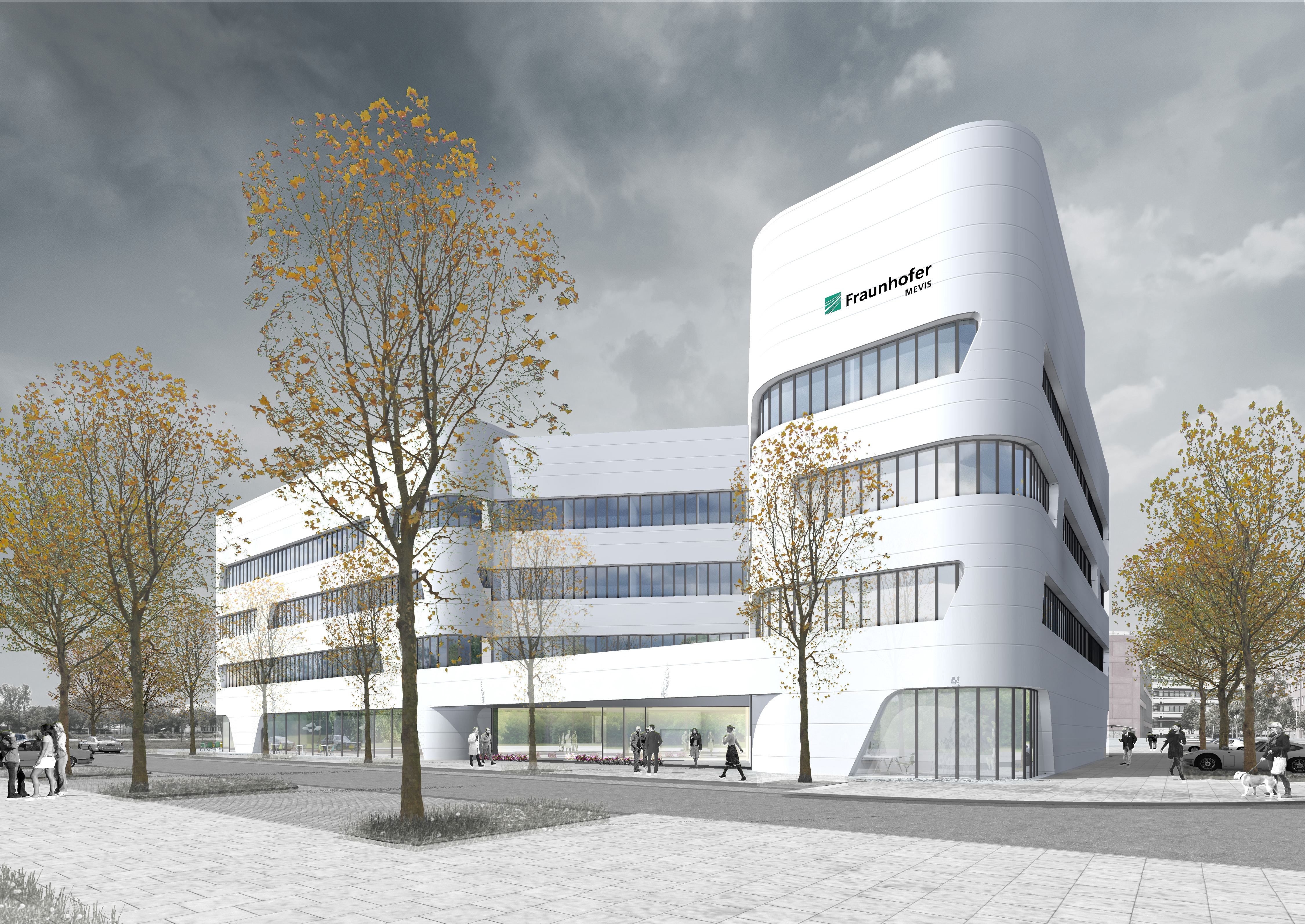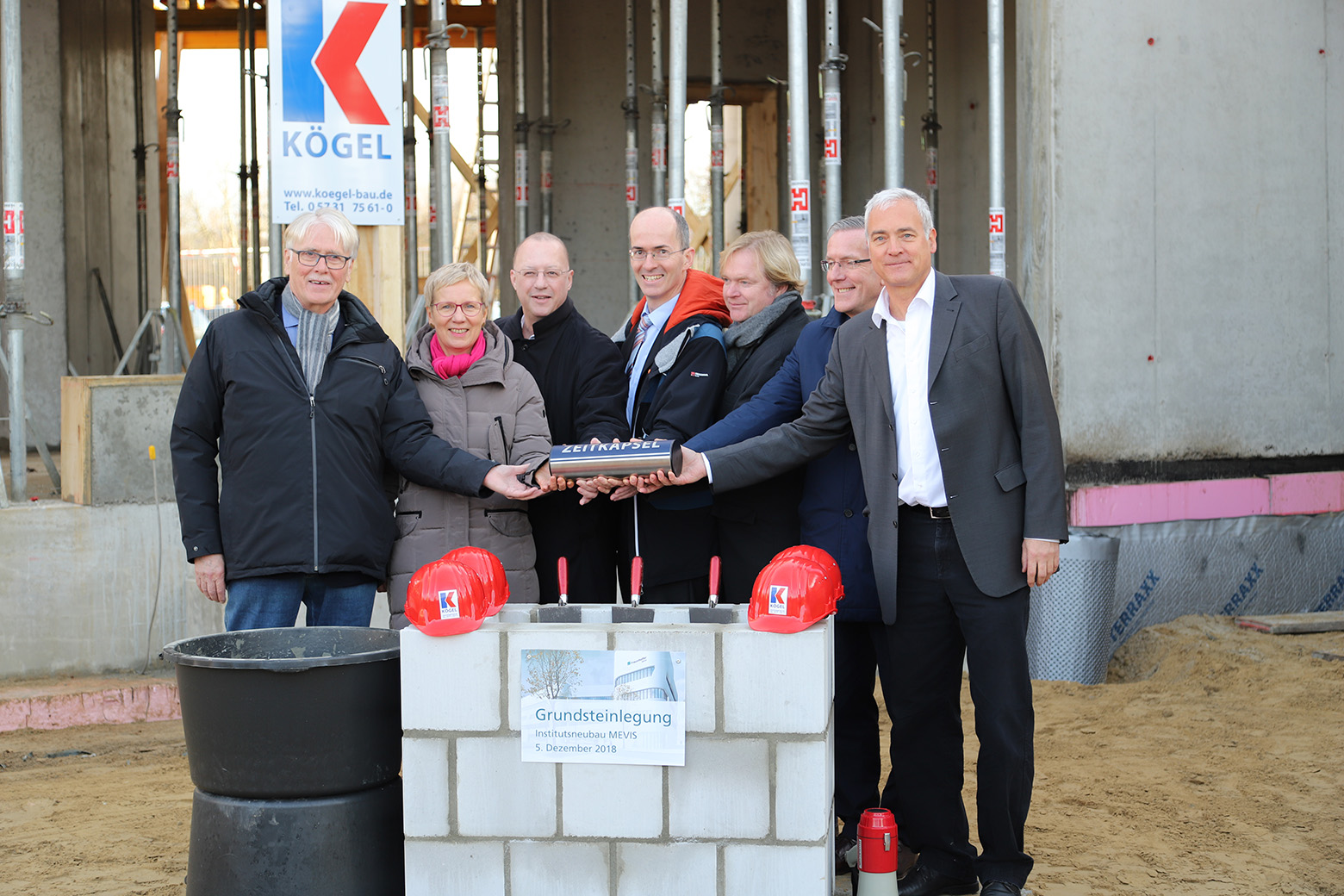A Workshop for Digital Medicine
Laying the cornerstone for the new home of the Fraunhofer MEVIS Institute
Laying the cornerstone for the new home of the Fraunhofer MEVIS Institute


The Fraunhofer Institute for Medical Image Computing MEVIS is one of the most prestigious research facilities of its kind. At four locations in Bremen, Lübeck, Berlin, and Aachen, the institute develops innovative software systems that support doctors in their daily routine, from heart diagnostics and tumor therapy to big data analysis for large-scale studies. Now, the institute’s main facility in Bremen will move into a new home. The cornerstone for the building will be laid at 11 o’clock on December 5, 2018. Starting in autumn 2020, it will provide a communicative and creative working environment for the MEVIS team.
Medicine is in the middle of a process of transformation accompanied by both great opportunities and challenges. Modern imaging methods and laboratory tests generate enormous amounts of digital data. To use them comprehensively, experts are working on adaptive algorithms and intelligent assistance systems. These can tease out diagnostically and therapeutically relevant information from the data that would otherwise remain hidden. “The digitalization of medicine is not only about making processes more efficient,” says Horst Hahn, one of the two Institute Directors at Fraunhofer MEVIS. “It is also about generating additional medical benefit for individual patients from the entire set of data. We are an innovation partner for clinics and companies in this field and are trailblazing new ideas.”
The new institute building on the campus of the University of Bremen should provide an ideal framework. The architectural concept is based on a cell structure composed of three organically shaped interlocking buildings. Glass walls will ensure transparency, and communication zones will provide space for spontaneous meetings. “The architecture reflects Fraunhofer MEVIS’s culture of transparency and collaboration,” says MEVIS construction representative Guido Prause. “It is open and connected and fosters transdisciplinary communication.” Thanks to this new building, the institute will move even closer to the University of Bremen – not just geographically. Fraunhofer MEVIS already works closely with the University’s Department of Computer Science. Together, they recently established the joint Medical Computing major. In the future, the collaboration will be expanded through joint workshops and seminars.
“We consider the new building a digital medicine workshop for developing and implementing software tools,” says Horst Hahn. “It will be a meeting point for different people such as clinicians, scientists, and entrepreneurs, but also for students, pupils, and teachers to think about the future of medicine.” Fraunhofer MEVIS already offers a variety of ways to inspire young researchers about mathematics, physics, and computer science and their importance for medicine.
Prior to the relocation into the new building, the research facility will receive a new name. On January 1, 2019, exactly ten years after becoming a part of the Fraunhofer-Gesellschaft, the Fraunhofer Institute for Medical Image Computing will become the Fraunhofer Institute for Digital Medicine. This reflects the Institute’s substantially expanded research spectrum that includes new challenges in medicine. The initial focus of optimally utilizing imaging methods such as CT, MRI, and X-ray is now supplemented with automatic and intelligent integration of comprehensive medical datasets and computer-based optimization of minimally invasive procedures. “With this name change, we want to depict the new mission of the Institute,” says Horst Hahn. “The transformation towards digital medicine is a highly demanding task that will keep us occupied for a long time.”
Fact box new building
The new institute building will be located on Max-von-Laue-Straße on the campus of the University of Bremen. The building will have 2600 square meters of usable area. Four floors will provide 210 workspaces for the 150 employees, as well as 60 research assistants, Ph.D. students, and guest researchers. The new building plans were developed by the architectural office Haslob Kruse and Partner in Bremen. The owner-builder is the Fraunhofer-Gesellschaft in Munich. The construction costs of around 15 million euro will be split in thirds between the Federal Ministry of Education and Research, the Federal State of Bremen, and the European Regional Development Fund (ERDF). Construction should be finalized by autumn 2020.
